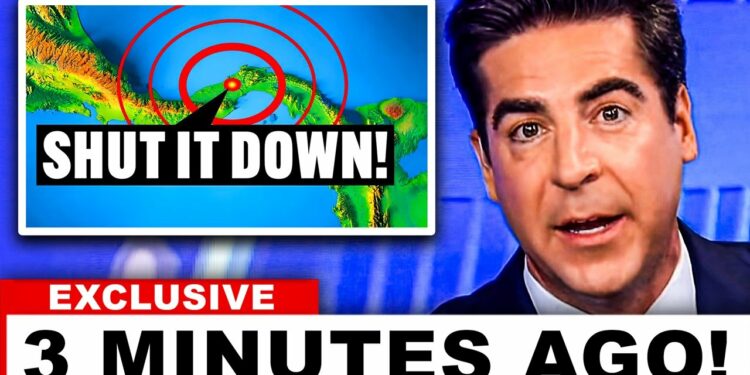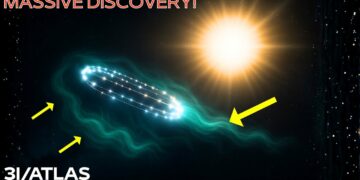For decades, Panama’s promises to the United States have been broken, and the spirit of our treaty has been blatantly violated. American ships face unfair treatment, and a shocking discovery threatens to reshape global trade and shift the balance of world power overnight. The Panama Canal, one of the world’s most critical waterways, now teeters on the edge of closure as the U.S. uncovers a chilling conspiracy from its adversaries, compounded by an unexpected natural disaster from the Caribbean. Hurricane Beryl has intensified into a Category 5 storm, leaving Caribbean nations reeling from its impact. This isn’t just another news story—everything is about to change. Are you ready to understand the stakes in the region? Join us as we dive into the details.
War on Panama
During his inaugural address, Donald Trump sent shockwaves worldwide by claiming that China had secretly taken control of the Panama Canal. This 51-mile waterway connects the Atlantic and Pacific Oceans, enabling approximately 14,000 ships to pass annually. Without it, vessels face a grueling, costly journey around South America’s southern tip. Trump’s accusations weren’t new—on Christmas Day, he posted on social media, alleging Chinese soldiers were illegally operating the canal, claiming he had evidence to support this. Panamanian President José Raúl Mulino swiftly dismissed these claims as baseless, asserting Panama’s sole control over the canal. On January 21, he formally complained to the United Nations about Trump’s remarks. Meanwhile, Panamanian officials launched an investigation into two Hong Kong-based companies managing port operations along the canal. The next day, January 22, Chinese Foreign Ministry spokesperson Lin Jian reiterated China’s support for Panama, emphasizing respect for its sovereignty, non-interference in canal management, and recognition of its neutral international status. Trump escalated tensions further, threatening to retake the canal by force, citing high fees unfairly charged to American ships. Panama’s government firmly rejected any foreign control, stressing that the Panama Canal Authority solely manages the canal. However, concerns in Washington have grown over China’s increasing investments in Panama’s infrastructure, and recent discoveries suggest Trump’s claims may hold some truth.
The Grand Plot
The controversy traces back to the 2016 Panama Canal expansion. On June 26, 2016, Panama celebrated the expansion’s opening with a grand ceremony. The first ship to transit was the COSCO Shipping Panama, a Chinese cargo vessel capable of carrying 9,400 containers, renamed for the occasion and paying $586,000 in tolls. Attended by leaders from over 10 countries, 62 nations’ delegates, and 15,000 Panamanians, the event included U.S. representatives like Jill Biden and the American ambassador. At the time, Panama maintained diplomatic ties with Taiwan, and Taiwan’s President Tsai Ing-wen attended as her first foreign visit. The choice of a Chinese ship for the inaugural transit signaled China’s growing influence, challenging both the U.S. and Taiwan. The next day, COSCO Shipping established two new companies in Panama, with Chairman Xu Lirong highlighting new opportunities in Central American markets. This reflected China’s broader strategy to deepen economic ties in Panama, Central America, and the U.S. East Coast. In May 2016, China’s Landbridge Group, partnered with Shanghai Gorgeous (owned by Geng Guo), acquired Margarita Island Port for $900 million. Located at the canal’s Atlantic entrance, this port—historically a U.S. military radio base—is the largest on the Atlantic side. In 2013, Panama signed an agreement for the Panama-Colón Container Port project, which stalled until Landbridge stepped in. This raised questions about China’s intentions, as it was already the canal’s second-largest user. The expansion allowed larger Neo-Panamax ships (up to 13,000 containers) to pass, compared to the previous Panamax limit of 5,000, boosting China’s trade advantages. China’s trade representative, Wang Weihua, noted the upgrade benefited Chinese shipping companies like COSCO and opened doors for further investments. Over 20 Chinese firms, state-owned and private, have since invested in Panama’s finance, telecommunications, and services sectors, quietly expanding China’s influence in this critical trade hub.
Fixing the Puzzle
Under the Chinese Communist Party’s strategic push, Panama severed diplomatic ties with Taiwan on January 12, 2017, recognizing the People’s Republic of China and endorsing the One China policy. This marked a diplomatic victory for China and a shift from Panama’s neutral stance, catching the U.S. and Taiwan off guard. Signs of this shift were evident earlier—on June 7, 2017, Landbridge Group broke ground on the Panama-Colón Container Port, with then-President Juan Carlos Varela announcing a $750 million Chinese investment. Landbridge’s chairman, Ye Cheng, linked the port to China’s Belt and Road Initiative’s maritime network, with Chinese firms handling design, construction, and management. By November 2017, Varela visited China, signing trade agreements and making Panama the first Latin American nation to join the Belt and Road Initiative. He also approved land near the canal’s Pacific entrance for a new Chinese embassy. In December 2018, Chinese President Xi Jinping’s visit to Panama, marked by unprecedented measures like road closures and a public holiday, underscored China’s growing presence. Initially perceived as a threat to the U.S., this alliance faced setbacks that reduced its influence, easing U.S. concerns.
China’s Failed Silent Takeover
China’s ambitions in Panama hit major obstacles. In June 2021, Panama’s Maritime Authority exposed Landbridge Group’s contract violations, including unpaid land fees, unmet investment commitments, missing documents, and insufficient local hiring. Panama revoked Landbridge’s lease, dealing a blow to China’s plans. Chinese media later reported Landbridge’s financial struggles, with frozen assets and debts exceeding 20 billion yuan, compounded by the arrest of investor Geng Guo for illegal loan activities in 2020. Despite the project’s failure, it had already strengthened China-Panama ties, leading to Panama’s Belt and Road inclusion after establishing diplomatic relations in 2018. That year, a Chinese consortium (China Communications Construction Company and China Harbour Engineering Company) won a $1.52 billion contract to build the Fourth Panama Canal Bridge, a complex 510-meter structure for road and rail. The bidding process sparked controversy when a European competitor withdrew, alleging unethical practices by Chinese firms. After Panama annulled the bid, the contract was awarded to the Chinese companies, but delays and design changes pushed the start to August 2024, with costs rising to $1.8 billion. Former President Varela faced corruption charges in 2019, was removed from office, and was banned from the U.S. in 2023 for money laundering, highlighting challenges tied to China’s Belt and Road projects, often criticized for fostering corruption and debt.
The Hostile Takeover
Major Chinese companies like Huawei established distribution centers in the Colón Free Trade Zone, while Chinese banks secured operating licenses. COSCO Shipping built warehouses and partnered with local maritime schools. The Colón Free Trade Zone, the world’s second-largest, offers tax advantages, allowing Chinese firms to bypass quotas and lower tariffs for U.S. and EU markets. Over 100 Chinese businesses operate there, making it a hub for exports to 46 Latin American countries. Panama’s laws allow investors with $250,000 to gain permanent residency, attracting Chinese business owners. In 2023, imports to the zone reached $100 billion, with 58% from China, and 64 million tons of canal cargo (22% of total traffic) were China-linked. China-Panama trade hit $13 billion, with China as Panama’s top trading partner. However, Panama’s exports to China fell 94.2% to $74 million, highlighting an imbalanced trade relationship. China has trained over 8,000 Panamanians in technology, agriculture, healthcare, AI, media, and culture, while Confucius Institutes promote Chinese language and traditions, though critics see them as tools for CCP propaganda and intelligence. Hutchison Port Holdings, a Hong Kong-based subsidiary of CK Hutchison, operates Balboa and Cristóbal ports, giving China access to critical shipping data. Ryan Berg from the Center for Strategic and International Studies notes this could be a strategic asset in U.S.-China tensions. Chinese firms also control warehouses, manufacturing hubs, and land along the canal, raising concerns about an intelligence network tied to the Panama Canal Authority, government, and media.
Building the Canal
The Panama Canal’s construction was a brutal battle against nature, disease, and death. Workers carved through snake-infested jungles under relentless rain, turning dirt into mud rivers. The Chagres River could transform into deadly rapids, and suffocating heat and humidity made conditions unbearable. Mosquitoes carrying yellow fever and malaria killed thousands, with bodies carted away daily. One worker, Alfred Dotson, recalled, “Death was our constant companion.” The French, led by Ferdinand de Lesseps, began in 1881 but faced mudslides, floods, and disease, losing 20,000 men before abandoning the project in 1888. The U.S. took over in 1904, facing similar horrors. Chief Engineer John Findley Wallace ordered a metal coffin, fearing death, but it carried another worker’s body. John F. Stevens, his successor, relied on Dr. William Gorgas, who targeted mosquitoes by fumigating homes, draining puddles, and sealing windows. By 1905, yellow fever was nearly eradicated, though malaria hospitalized 80% of workers. Accidents at Culebra Cut, an 8-mile mountain stretch, became deadly, with dynamite explosions and landslides killing workers. In 1908, an explosion killed 23 men instantly. Between 1904 and 1913, nearly 6,000 workers died under U.S. control, with a total of 500 deaths per mile, including French losses. The canal was a graveyard carved through the jungle.
The Fight for the Canal
U.S. control from 1914 made the canal a vital trade and military gateway, but it marginalized locals, sparking tensions. In 1964, protests over U.S. control turned deadly, killing 28 and prompting the 1977 Torrijos-Carter Treaties, which transferred the canal to Panama by 1999. The U.S. retained the right to use force if neutrality was threatened. After a turbulent transition, including a 1989 U.S. invasion to oust Manuel Noriega, Panama gained full control in 1999, managed by the Panama Canal Authority. Its history is steeped in sacrifice, but does this justify U.S. reclamation?
Reclaiming the Canal
Reclaiming the Panama Canal would be disastrous for the U.S. Since its transfer in 1999, the move has proven strategic, neutralizing anti-American sentiment in a post-WWII decolonization era. The 1964 riots, sparked by Panamanian students raising their flag in the Canal Zone, killed 24 and fueled demands for change. Guerrilla movements in Latin America and General Omar Torrijos’ threats to sabotage the canal if not returned forced the U.S. to act. The 1977 treaties reduced tensions, countered Soviet propaganda, and ensured neutrality. Panama’s efficient management under the Panama Canal Authority has lowered accidents, improved transit times, and expanded the canal in 2016. The U.S., the canal’s largest user, benefits without colonial burdens. Claims of overcharging are exaggerated—droughts in 2023 limited transits, but fees applied equally to all nations. An invasion would alienate Latin America, damage U.S. reputation, and push Panama toward China, strengthening the influence the U.S. seeks to counter. Supporting Panama’s stability is the smarter strategy.
Withstanding Nature
A 7.6-magnitude earthquake struck the Caribbean Sea, triggering tsunami warnings and raising fears for the Panama Canal. Tectonic shifts unleash primary waves, followed by destructive secondary and surface waves that could crack the canal’s locks and foundations. Engineers reinforced the canal with flexible joints, deep foundations, and 2016 upgrades, including sensors for early warnings. However, Panama’s fault lines, like the Panama Fracture Zone and South Caribbean Deformed Belt, pose risks. A hypothetical 8.0-magnitude quake could convulse the canal, cracking locks and unleashing Gatun Lake’s water, halting operations. Landslides could bury infrastructure, and an offshore tsunami could flood facilities, paralyzing global trade for weeks or months. Shipping costs would skyrocket, factories would stall, and energy supplies would dwindle, impacting millions worldwide. For Panama, the canal is a symbol of pride and a lifeline, making the threat of natural disaster deeply unsettling.
Beyond geopolitical and natural threats, the Panama Canal continues to reveal astonishing discoveries, reshaping our understanding of its significance. Thanks for watching, and see you in our next video!























